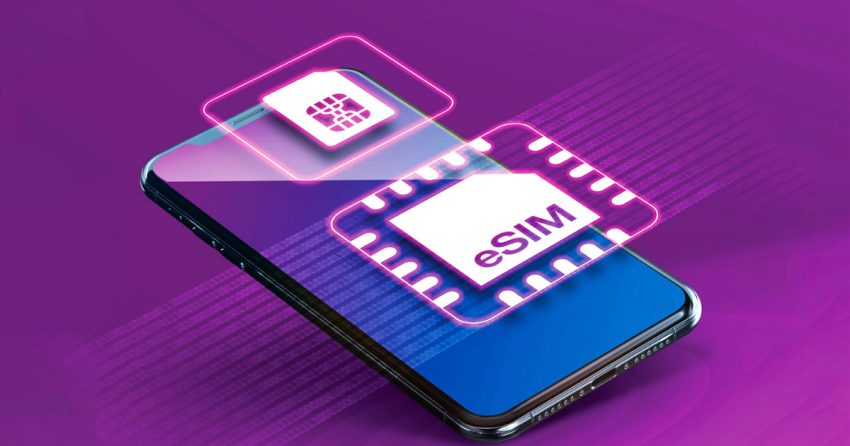Introduction to eSIM Technology
eSIM stands for embedded SIM, and it is a technology that allows users to switch to different cellular providers without having to install a physical SIM card. This technology is becoming increasingly popular because it allows users to easily switch to a new provider without having to physically switch out the SIM card, which can be inconvenient.
eSIM technology is also beneficial for those who travel frequently, as it eliminates the need to purchase multiple SIM cards for each country. Additionally, eSIMs are more secure than traditional SIM cards, as they cannot be tampered with or replaced without the user’s consent.
Regional Esim
Regional Esim is a cloud-based mobile network that provides coverage to the areas of a particular region. It allows users to access the mobile network of a particular region without the need to roam to other networks. This is especially useful for those who are often travelling between different regions or countries. Regional Esim also allows users to use the same mobile number when travelling and save money spent on roaming charges.
This technology is also beneficial for businesses as it allows them to stay connected with their customers and employees no matter where they are located.
eSIM Architecture
eSIM stands for embedded SIM. It is an embedded form of subscriber identity module (SIM) which is used in mobile phones. It is a technology that allows users to store their mobile phone numbers and other information on a device, instead of having to insert a physical SIM card.
The eSIM is usually built into the device, but can also be removable and transferable. Its architecture is based on a secure element, commonly referred to as an embedded Universal Integrated Circuit Card (EUICC). This secure element is located within the device and contains the necessary information for the device to be able to connect to a network.
The EUICC itself consists of a variety of components including a secure processor, a secure operating system, and a secure memory. The processor is responsible for executing the code and running the security protocols, the operating system is responsible for managing memory and the communication interfaces, and the secure memory contains secure data such as the SIM profile. The eSIM also includes a connection to a mobile network operator (MNO) or mobile virtual network operator (MVNO) to manage the user’s account and provide access to services.
Benefits of eSIM
Increased portability: eSIM technology makes it easier to switch carriers without having to go through the hassle of buying a new SIM card.
Reduced costs: With eSIM technology, carriers can reduce costs associated with producing and distributing physical SIM cards.
Secure transactions: eSIM technology offers increased security for transactions as it stores SIM information in a secure chip on the device, rather than a physical card.
Increased device compatibility: eSIM technology allows users to connect to compatible networks on different devices, eliminating the need to carry multiple SIM cards.
Improved customer experience: eSIM technology makes it easier for customers to switch carriers and manage their account online, which improves the customer experience.
Esim Data opportunity
Esim data plan opportunities provide businesses with access to a vast library of data from various sources. This data can be used to gain insights into customer behavior, gain a better understanding of market trends, and create more effective marketing campaigns. It can also be used to develop better products and services and increase efficiency in operations. Additionally, esim data can be used to identify and address security risks, detect fraudulent activities, and improve the customer experience. By leveraging Esim data, businesses can gain a competitive edge, improve customer loyalty, and increase their bottom line.
Challenges of eSIM
Security: One of the main challenges of eSIM is the security of the data stored on the SIM card. Since the card is connected to the internet, it is vulnerable to hacking and data theft.
Cost: eSIMs are more expensive than traditional SIM cards, so it can be a burden for some users to purchase them.
Not widely available: Another challenge is that not all carriers offer eSIMs and only certain phones are compatible with them. This limits the use of eSIMs to certain customers and devices.
Limited compatibility: eSIMs are not compatible with all devices, so users may need to purchase a new device if they want to use an eSIM.
Service availability: eSIMs require a stable data connection to work, so they may not be available in all areas or countries.
Security of eSIM
The security of eSIMs is managed through the same methods used to secure traditional SIM cards. The eSIM itself is protected through a secure element, which is a chip that stores the identity and authentication details for the eSIM card. This secure element is encrypted and can only be accessed with a secure key, which is stored on the eSIM card itself. The secure element is also managed by the mobile network provider and can be used to securely download the necessary credentials for the eSIM card. Additionally, the eSIM itself is also encrypted, which helps to protect the data stored on the card.
eSIM Applications
eSIM applications are applications that allow users to access and manage their eSIM profiles. These applications can be used to store and manage multiple eSIM profiles, allowing users to easily switch between networks and access different services. This technology can also be used to enable remote SIM provisioning, allowing users to activate SIMs without having to physically visit a store or retailer. eSIM applications are widely used to enable connectivity for mobile phones, tablets, and wearables. Some popular eSIM applications include Apple’s eSIM, Samsung’s eSIM, and Google’s eSIM.
Future of eSIM Technology
The future of eSIM technology looks very promising. The technology is already being used in smartphones, laptops, and other connected devices, and it is expected to become even more widely adopted in the coming years. eSIM technology eliminates the need for physical SIM cards, making it easier for users to switch between devices and carriers without having to deal with the hassle of swapping SIM cards. Additionally, the technology is expected to continue to evolve, with new features and applications being developed to meet the changing needs of consumers. As the technology continues to grow, more companies are likely to adopt eSIM technology, leading to more widespread adoption and use.

